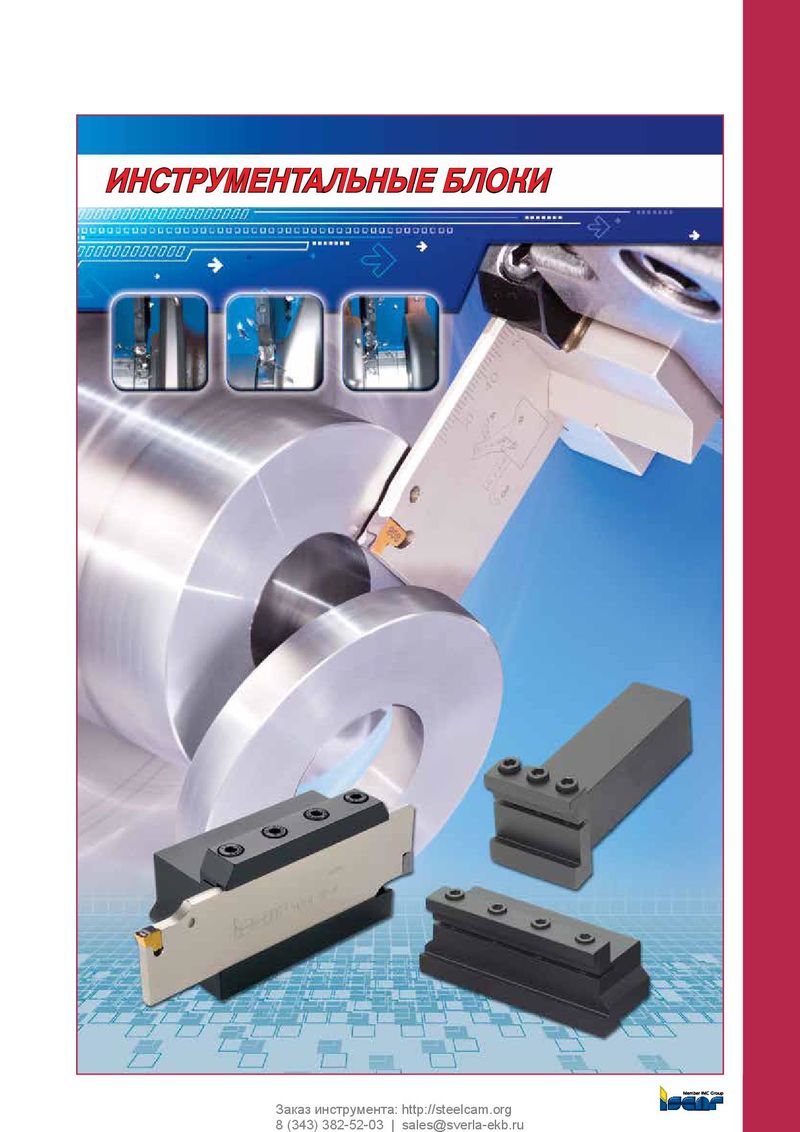Каталог Iscar инструментальная оснастка 2022 - страница 7
Навигация

TOOLING SYSTEMS INTRODUCTION Balancing Elements Balancing Definitions Balancing Coolent Chucks Introduction Balancing is the process of equalizing the mass m distribution of a body so it rotates in its bearing without unbalanced centrifugal forces. Balancing causes reduced vibration, lower spindle strain and improved machining qualities, r and allows for higher cutting parameters. The measuring equipment available today enables unbalance to be reduced to low limits. However, it would be uneconomical to exaggerate the quality requirements. Example 1 It has therefore become necessary to determine to what U=2 g x mm can be treated as an unbalance mass extent the unbalance should be reduced and where of m=2 g in radial distance of r=1 mm or as a mass the optimum economic and technical compromise of m=0.1 g in radial distance of r=20 mm, etc. on balance quality requirements would be struck. Example 2 Definition The residual unbalance is independent of the speed. This value reflects the unbalance mass and its distance G - Balance quality (mm/s) from the true center of mass. The residual unbalance e - Specific unbalance (gxmm/Kg) value is measured on balancing machines. Ω - Speed (rad/s) N - Speed (rpm)M-Mass of the body (kg) U = m ∙ r = >m = Ur = 420 = 0.2g m - Mass of the unbalance (g) G value reflects the balancing quality of a r - Radius of the unbalance (mm) toolholder according to its rotational speed (N) U - Residual unbalance (gxmm) e= UM =>U=M∙e G =Ω∙e= π∙N30 ∙ UM = U∙N∙πM ∙ 30 Ω= 2πN60 = πN30 e= G ∙ 30π∙N Operation Example 3 Residual unbalance equals the tool’s mass (M) G value reflects the balancing quality of a toolholder times its eccentricity (e). Eccentricity measures the according to its rotational speed (N). extent to which the tool’s weight is off-center. It is defined as the distance from the tool’s center of the G = π30 ∙ N ∙ U π 8M = 30 ∙ 15, 000 ∙ 2, 000 ≈ 6.3 (mm/s) rotation to its true center of mass. If eccentricity is measured in microns and tool mass is measured in kilograms, this unit yieldsresidual unbalance in gram-millimeters.e=UM=e=82= 4 (g ∙ mm/kg) Any two sets of mass and eccentricity that yield the The G value will change to G=2.5 mm/s when using the same unbalance value will have the same effect on same toolholder at a rotational speed the tools, so long as the residual unbalance is in the N=6, 000 rpm and to G=1.0 mm/s at same plane perpendicular to the rotation axis. N=2, 500 rpm. Balance quality grades for various U=r∙m groups of representative rotors: • General machine tool parts - G6.3 The residual unbalance is independent of the speed. • General toolholders and machine drivers - G2.5 This value reflects the unbalance mass and its distance • Grinding machine drivers - G1.0 from the true center of mass. The residual unbalance • Spindles of precision grinders - G0.4 value is measured on balancing machines. 555
 Каталог Iscar инструментальные блоки
Каталог Iscar инструментальные блоки Каталог Iscar токарный инструмент 2017
Каталог Iscar токарный инструмент 2017 Каталог Iscar монолитные фрезы 2022
Каталог Iscar монолитные фрезы 2022 Каталог Iscar расточные системы
Каталог Iscar расточные системы Каталог Iscar обработка канавок 2022
Каталог Iscar обработка канавок 2022 Каталог Iscar новые продукты 2018
Каталог Iscar новые продукты 2018